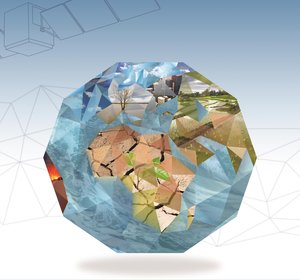A new satellite to understand how Earth is losing its cool
Following a rigorous selection process, ESA has selected a new satellite mission to fill in a critical missing piece of the climate jigsaw. By measuring radiation emitted by Earth into space, FORUM will provide new insight into the planet’s radiation budget and how it is controlled.
The Far-infrared Outgoing Radiation Understanding and Monitoring (FORUM) mission was one of two concepts competing to be ESA’s ninth Earth Explorer mission.
Earth Explorers use innovative measurement techniques to yield new insight into different aspects of the Earth system and the interactions that bind the system as a whole. Fundamentally, they are designed and built to fill knowledge gaps identified by the scientific community, so, importantly, the community retains a key role in the selection and development process.
After a two-year feasibility study phase, both FORUM and its competitor, the Sea-surface Kinematics Multiscale monitoring (SKIM) concept, were presented and discussed in detail with the scientific community at a User Consultation Meeting in Cambridge, UK, in July.
Wolfram Mauser, who chaired ESA’s Advisory Committee for Earth Observation on behalf of Martin Visbeck, said, “Both mission concepts are outstanding in the value they would bring to science, and are technologically ready to be built, so it was difficult to recommend which one should be implemented.
“Nevertheless, FORUM promises to improve climate models and, therefore, climate prediction. So with the issue of climate change a major global concern, we finally decided to recommend this concept – and we are very happy that ESA has taken our recommendation.”
Earth’s surface temperature is driven by the radiation balance at the top of the atmosphere, but this balance has been disturbed by the emission of greenhouse gases that are trapping heat in the atmosphere that would otherwise escape into space. More than half of this outgoing longwave energy is in the far-infrared part of the electromagnetic spectrum – and this has not, so far, been measured.
Filling this gap, FORUM will measure across Earth’s entire far-infrared part of the electromagnetic spectrum.
These measurements are important because Earth’s outgoing radiation at these wavelengths is strongly affected by water vapour and ice clouds, which in turn, play a key role in regulating surface temperatures.
Measurements from this exciting new mission will improve confidence in the accuracy of climate change assessments that form the basis for future policy decisions.
Josef Aschbacher, ESA’s Director of Earth Observation Programmes, said, “FORUM will measure, for the first time, the far-infrared part of the electromagnetic spectrum from space, thus allowing us to better understand the energy balance of our planet. FORUM will bring great benefits to climate science.
“Better understanding the complexity of our climate system and filling gaps in our knowledge is of critical importance as the consequences of climate change are far-reaching, affecting all facets of society and the natural world.”
The design of the mission will now be fine-tuned, and then built with a view to be launched in 2026.










